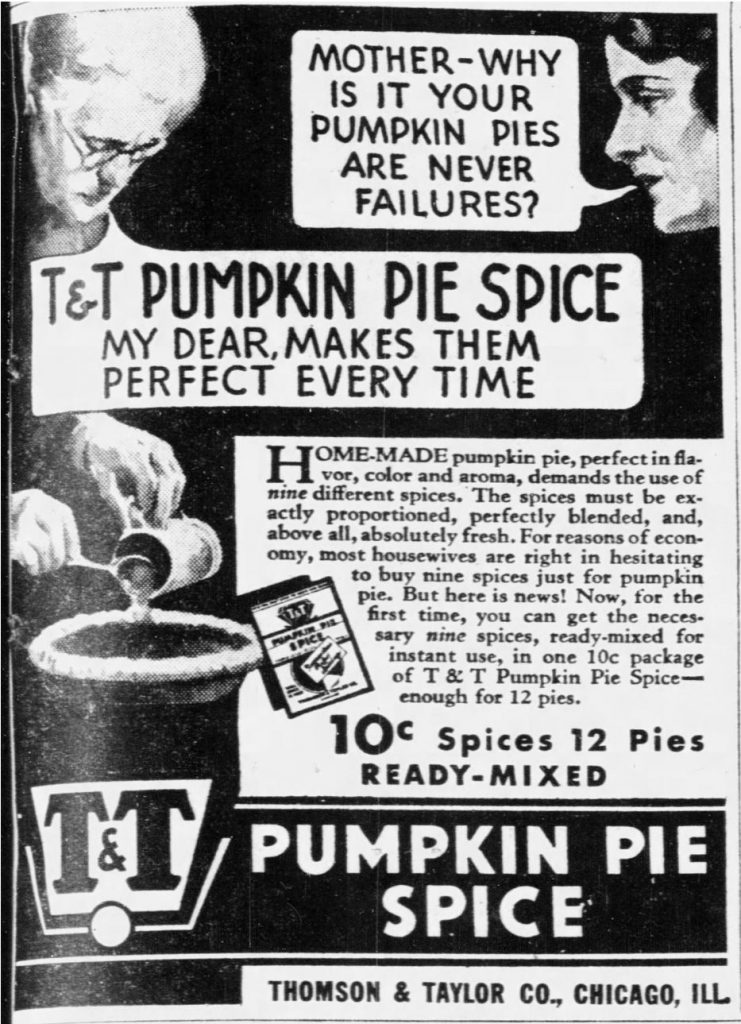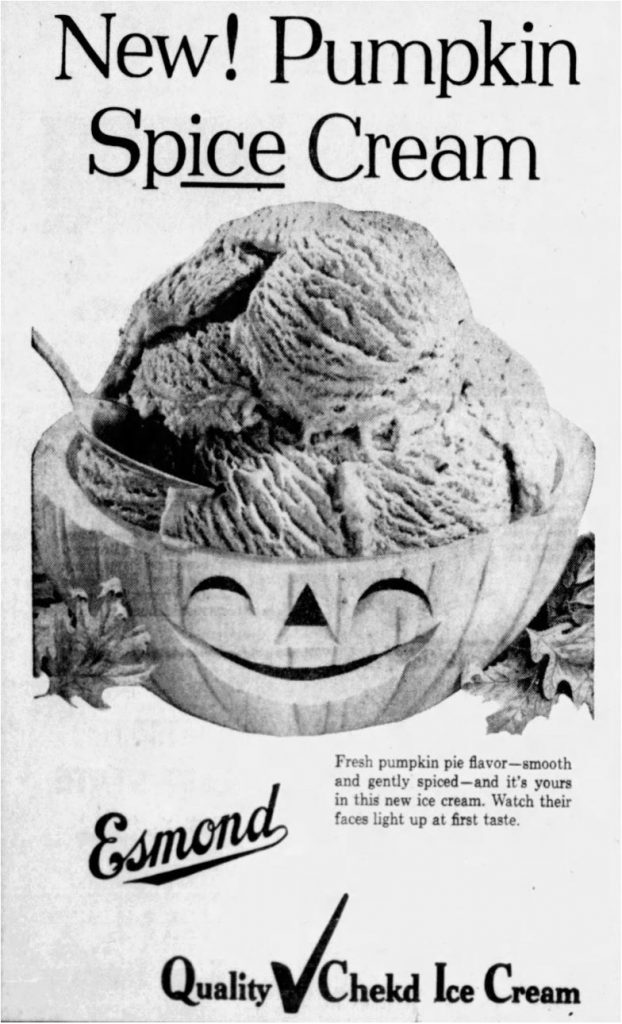Love it or hate it, pumpkin-spice season is here again. But do you know how this autumn flavor got its start?
Let’s head to the historical papers on Newspapers.com to see what we can learn. Click on any of the links in the post to see newspaper clippings that document the history of pumpkin spice!
An Age-Old Combination

“Pumpkin spice” is usually a mix of cinnamon, nutmeg, ginger, allspice, and/or cloves. Since some combinations of these spices date back to ancient days, for the sake of time, let’s jump forward to the 18th century United States.
By this time, spices were available in the U.S. and were being used in cooking and baking. A 1734 Pennsylvania newspaper advertisement, for instance, shows that spices like nutmeg, cinnamon, and allspice were being imported to the U.S. And a newspaper recipe for “soft cakes” from 1825 New York confirms that spices (nutmeg and cinnamon in this case) were used in early American baking.
For the Love of Pumpkin Pie
So it’s clear that the spices in “pumpkin spice” were used together, but where does pumpkin come in?
Americans have been flavoring their pumpkin dishes with spices for a long time. In fact, the first American cookbook (“American Cookery” from 1796) includes a pumpkin recipe that uses mace, nutmeg, and ginger.
But most of all, Americans loved pumpkin pie, and spices were an important part of the flavor of the dish. A 1839 newspaper recipe, for example, calls for cinnamon and ginger in the pie filling.
“Pumpkin Pie Spice” Proliferation
But when did this traditional spice combination become known as “pumpkin spice”?

In 1930, a spice company called Thompson & Taylor (T&T) introduced what they called “Pumpkin Pie Spice,” which combined all the spices a home baker needed to make pumpkin pie. Now, as the ads claimed, making pumpkin pies at home was more convenient and the pies themselves would be more consistent in flavor.
The idea of selling a pre-mixed pie spice caught on, and over the next few years more and more companies introduced their own pumpkin pie spices. The mix best-known today, by McCormick, went on the market in 1934.
With an increasing number of companies selling pumpkin pie spices, newspapers were inundated with ads around Thanksgiving time. As newspapers tried to save space, the mix was sometimes referred to simply as “pumpkin spice” instead of “pumpkin pie spice,” as you can see in this ad from 1931.
With pre-mixed pie spices now readily available and convenient, it was easy for creative home cooks in the 1930s and beyond to add it to other foods, from soufflés to cookies to gingerbread. McCormick even briefly marketed a “Pumpkin Pie & Ginger Bread Spice” in the mid-1930s.
“Pumpkin Spice” Comes into Its Own

Around this same time, “pumpkin spice” began appearing in the names of recipes published in newspapers. For instance, based on the papers currently on Newspapers.com, recipes for “Pumpkin Spice Cake” began showing up in newspapers around 1935, though we found a brief mention in an ad from 1934.
From this time on, ads and recipes for “pumpkin spice” flavored foods appeared with increasing frequency in newspapers, and it became well-established as its own flavor in the decades that followed.
But, of course, despite pumpkin spice’s long history, the current flood of pumpkin-spice products can largely be traced back to Starbucks, which first introduced its popular Pumpkin Spice Latte in 2003. Spiced coffee has its own extensive history, but Starbucks’ branding of its new beverage as “pumpkin spice” kicked off a trend that seems to have taken over the autumn season. Whether you like it or not.
Search Newspapers.com for more pumpkin-spice articles and recipes. And follow us on Facebook, Twitter, and Instagram for more interesting historical content like this!

